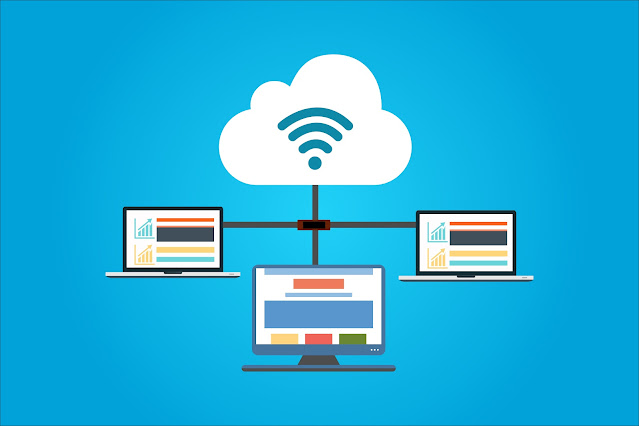What is cloud computing
{getToc} $title={Table of Contents}
Cloud computing has revolutionized the way we use technology, offering a more flexible, efficient, and cost-effective approach to managing IT resources. Here’s an article that delves into the essence of cloud computing:
Understanding Cloud Computing:
What is Cloud Computing?
At its core, cloud computing means storing and accessing data and programs over the internet instead of your computer’s hard drive. When you store data on or run programs from the hard drive, that’s called local storage and computing. Everything you need is physically close to you, which means accessing your data is fast and easy, for that one computer, or others on the local network. But when you’re accessing services over the internet, this is what we refer to as cloud computing.Key Benefits of Cloud Computing
The adoption of cloud computing is driven by its numerous benefits:Cost Efficiency: Cloud computing reduces the capital expense of buying hardware and software and setting up and running on-site data centers.
Speed: On-demand self-service means vast amounts of computing resources can be provisioned in minutes.
Global Scale: The ability to scale elastically delivers the right amount of IT resources when and where they’re needed.
Performance: Cloud services run on a worldwide network of secure data centers, which are regularly upgraded to the latest generation of fast and efficient computing hardware.
Performance: Cloud services run on a worldwide network of secure data centers, which are regularly upgraded to the latest generation of fast and efficient computing hardware.
Reliability: Data backup, disaster recovery, and business continuity are easier and less expensive, as data can be mirrored at multiple redundant sites on the cloud provider’s network.
Private cloud services are delivered from a business’s data center to internal users. This model offers versatility and convenience, while preserving management, control, and security.
Public cloud services are delivered over the internet and are owned and operated by providers like Amazon Web Services (AWS), Microsoft Azure, and Google Cloud Platform (GCP).
Hybrid cloud is a combination of public and private clouds, bound together by technology that allows data and applications to be shared between them.
Cloud Computing Models.
Types of Cloud Computing
Cloud computing services can be private, public, or hybrid:Private cloud services are delivered from a business’s data center to internal users. This model offers versatility and convenience, while preserving management, control, and security.
Public cloud services are delivered over the internet and are owned and operated by providers like Amazon Web Services (AWS), Microsoft Azure, and Google Cloud Platform (GCP).
Hybrid cloud is a combination of public and private clouds, bound together by technology that allows data and applications to be shared between them.
Cloud Computing Models.
There are three main models of cloud computing services:
Infrastructure as a Service (IaaS): The most basic category of cloud computing services, offering virtualized physical computing resources over the internet.
Platform as a Service (PaaS): Offers hardware and software tools over the internet, typically for application development.
Software as a Service (SaaS): Delivers software applications over the internet, on-demand and typically on a subscription basis.
The Future of Cloud Computing
The future of cloud computing is promising and is expected to continue growing and evolving. It is becoming the default option for many apps: software vendors are increasingly offering their applications as services over the internet rather than standalone products as they try to switch to a subscription model. Furthermore, the flexibility of cloud computing is a key factor that will contribute to its ongoing adoption and development.conclusion
In conclusion, cloud computing is not just a trend but a significant shift in how IT resources are managed and provided. It offers scalability, reliability, and flexibility, all while potentially lowering costs. As we move forward, cloud computing will continue to be an integral part of the IT ecosystem, driving innovation and new business models.This article provides a high-level overview of cloud computing, its benefits, types, and future outlook. For a more in-depth understanding, you can explore resources provided by cloud service providers like Microsoft Azure and Google Cloud, or educational platforms.


